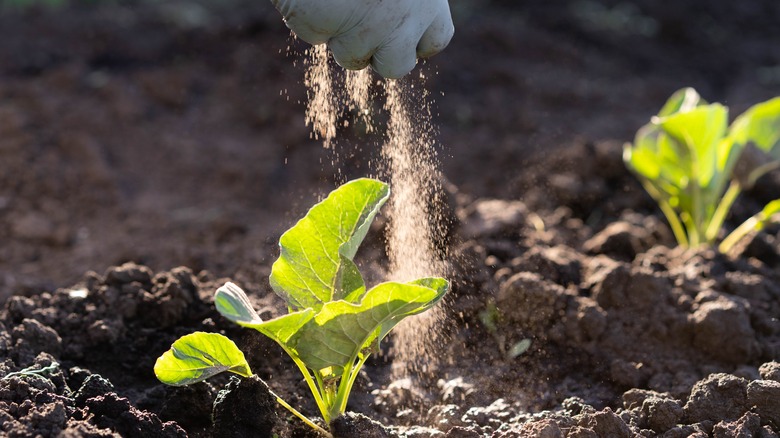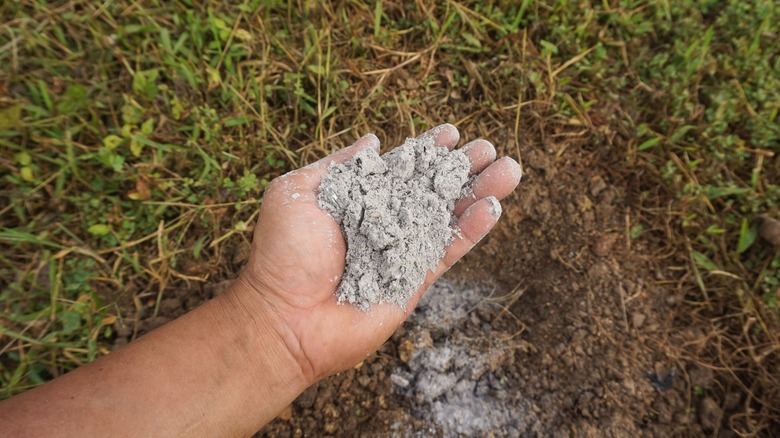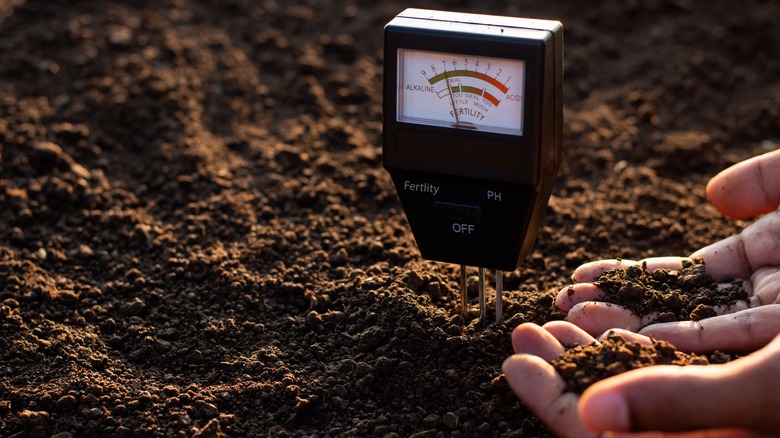How To Use Fireplace Ash To Help Your Garden Thrive
If you have a wood burning fireplace, stove, or outdoor fire pit, then you may have already mastered how to build the perfect fire and have already locked down your favorite cooking methods for a fire-roasted meal. However, what you may not already know is that the ash from your fire can be recycled in your garden. Ash made from wood fires contains essential nutrients like potassium and calcium which can aid with plant growth — particularly in root vegetables, peas, beans, and fruits.
But the benefits don't stop there. In fact, adding wood ash to your garden is a great way to treat overly acidic soil and make it more suitable for a wider variety of flowers and vegetables. Furthermore, wood ash, when sprinkled around the base of a plant, can keep away garden pests like snails and slugs. It can also protect root vegetables (like carrots and turnips) from pesky turnip flies.
However, before you grab a handful of ash from your fireplace and sprinkle it on your garden, let's talk about how to correctly add ash to your soil. This is important because using the wrong wood or adding ash in the wrong way can negatively impact the health of your garden. So, what is the best way to use ash to help your plants thrive?
How to add wood ash to your garden for the best results
When planning to add leftover ashes from a fire to your garden soil, the first thing you need to consider is where the wood came from. Because trees can absorb pollutants from their environment, wood from trees that grew in industrial areas often contains toxins and heavy metals. If ash that contains these toxins is then added to the garden, they will be absorbed by your vegetables. Because of this, if you don't know where your wood is from, you should avoid adding its ash to your soil.
Once you are sure that your wood is sourced from a natural area, you should look at what type of wood it is. Ash made from burning hardwoods (like oak and maple) contains more nutrients than ash from softwoods. Furthermore, ash from younger branches is often more nutrient rich than that of older branches.
Luckily, once you have chosen your wood and have made it into ash, adding it to your garden is quite simple. All you have to do is first sieve the ash to remove any large pieces and then spread it over your garden and rake it into the soil. This is best done in fall when your garden has been harvested so that the ash doesn't interfere with seed germination.
When not to add wood ash to your garden
While using leftover ash as a fertilizer can be helpful for your garden in certain situations, there are also some instances where it can do more harm than good. For example, if your soil already has a good pH for your flowers and vegetables, adding extra ash may make it too alkaline. Because of this, it is important to test your soil's pH before applying ash and then retest every two years or so if you continue to add it annually. Furthermore, some plants — like rhododendrons and blueberry bushes — actually prefer acidic soil, so you should avoid adding wood ash near them.
While wood ash contains important nutrients like potassium and calcium, it does not contain nitrogen and is therefore not considered a complete fertilizer. Therefore, if your plants are suffering from a nitrogen deficiency, you will want to add another fertilizer instead of ash. To prevent nitrogen deficiency in your soil, you can also rotate your crops with nitrogen-fixing plants.


